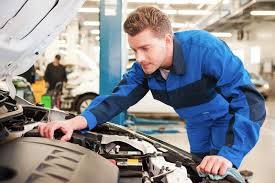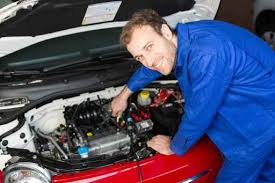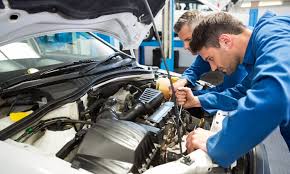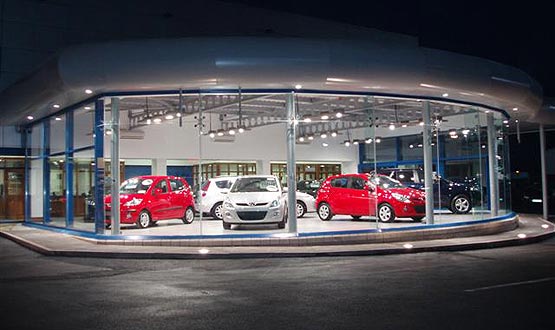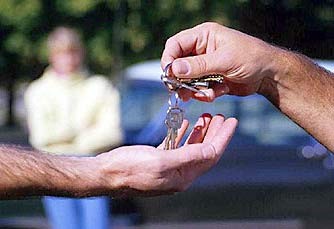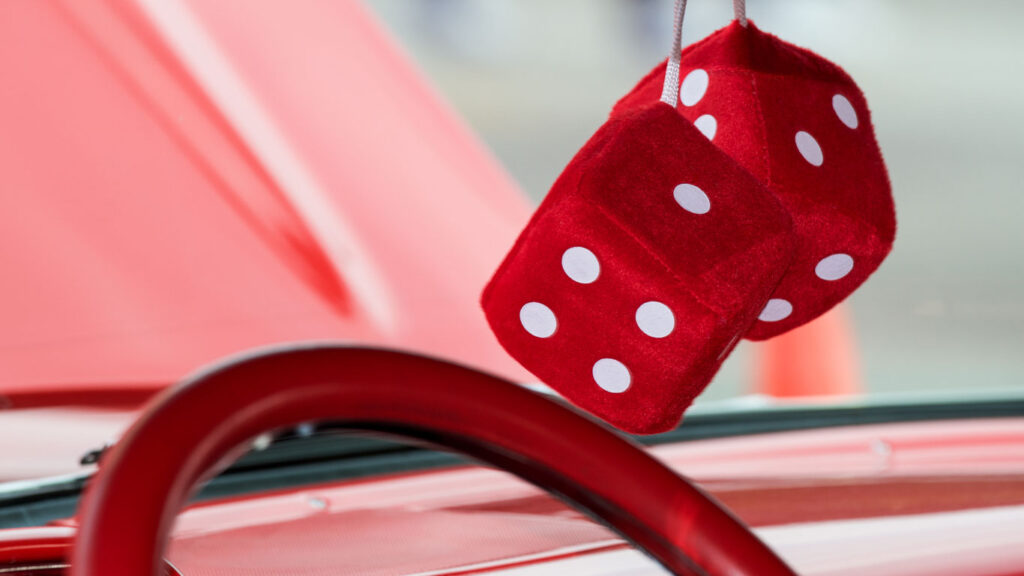Warehouse Management Blog
THINGS TO REMEMBER WHEN PLANNING A CAR
SHOWROOM
New Car showrooms can be lavish
enterprises, with double-height glazing, blazing lights and costly stone
floors. And that’s before you even get into the realms of internet cafes and
branded clothing.
A car is one of the most expensive
purchases a person makes and today’s showroom has an important role in helping
customers make that decision. In an increasingly segmented market, an outlet
needs to cater for a range of clients and their needs.
Dealers know that just as important as how
the dealership looks, is how the dealership WORKS!
How do my customers and staff use my
dealership for day-to-day activities?
Can my sales team see the lot without
obstruction?
Do my customers have clear routes to the
service area / workshop?
Where is the guest bathroom located?
How large does the showroom need to be to
accommodate the number of cars we want to display?
Given our planning volume and service
growth goals how many service bays do we need in the body shop? How many
technicians?
In today’s brand-driven society, cars and
lifestyle overlap and the sales environment should reflect the customer’s
preferences. The scope of a car dealership scheme is not limited to sales.
After-sales service is an element of the business model so a service reception
and a parts and workshop facility are often located on a showroom site.
Design considerations
Car showrooms need to be located on highly
visible sites with good access to main transport routes and an eye-catching
frontage. Display of the car range is paramount and the layout and orientation
of sites and display areas will have a major impact on sales. These
considerations affect environmental control strategies, as not all buildings
can be oriented to mitigate solar gain and heavily tinted solar control glass
is not generally considered for the main facade.
How to Buy a Car
Have you ever dreamed of owning your own
car? Imagine driving down a tree-lined street with the windows down on a sunny
day, a warm rush of air streaming through your hair… OK, snap out of your
reverie. Before you start mapping out the route to the nearest beach, you just
might want to learn some valuable car-buying tips.
Buying a car, whether it’s a first-time
purchase or not, can seem like a daunting task. You’ve probably seen your share
of car commercials on TV and recall hearing phrases like “down
payment” and “APR.” Although some of the terminology may seem
confusing, once you break it down, buying a car is pretty straightforward.
There is certainly a lot of information you need to understand before you run
off to your local dealership. But once you know what the acronyms mean and how
car financing works, you’ll be ready to get the best possible price on the car
you’ve chosen.
The first thing you must decide before you
begin your automobile research is whether you want a new car or a used car. Of
course, there are benefits and drawbacks on both sides. If you decide to buy a
used car, there are several things you need to keep in mind
First of all, there are more than 2 million
car accidents annually and chances are if you are in the market for a used car,
you will come in contact with at least one automobile that was in an accident.
The most important thing about buying a
used car is that you know everything about the history of the car, including:
the number of previous owners
if the car was ever involved in an accident
any previous mechanical problems
the maintenance history of the car
Things you don’t see in cars anymore
We’re not here to say things were better in
the old days – whisper this, but they were (shhh) – but here’s a selection of
things you’ll no longer find as you climb inside the semi-autonomous extension
of your living room. Fluffy dice not included.
Video didn’t kill the radio star, but fuel
injection and emissions regulations certainly signalled the end for the humble
choke. Most drivers under the age of 25 will have no idea that a choke even
existed, while for older drivers, the little pull switch will rekindle memories
of flooded engines and possibly even the odd clothes peg. If you get this
reference, you’ll understand.
Some children will look at that strange
object on the door and laugh. Others might shout at their parents for failing
to invest in the ‘luxury’ of electric windows.
Remember the days when buses featured a
smoking area? Then you’ll no doubt remember the days when a car featured not
one, but several ashtrays. One below the dashboard, one ahead of the rear
seats, maybe a couple on the inside of the rear doors.
The cassette player was rendered obsolete
by the CD player, but it didn’t go down without a fight. If you were lucky, a
new car came with an in-dash CD player, but for true luxury you need a CD
autochanger, which tended to be mounted in the boot, below the seat or in the
glovebox.
How to Develop a Car Dealer Website
The United States is the world’s
second-largest car producer, with an over 12% share of the world market. The US
is also the world’s biggest car importer. The dollar value of cars imported to
the US in 2018 was $178.5 billion.
Many kinds of businesses can benefit from
this large market. In this article, you’ll learn how to build a car dealer
website for the US market, what features are necessary, and how much it will
cost to implement them.
What distinguishes a car marketplace
website from other kinds of websites?
Why would anybody visit a car marketplace?
Mostly to find the most suitable car. The two main things that a car
marketplace needs are
a wide choice of vehicles
an efficient sorting system
Tailoring to your target audience
If you want to know how to make used cars
website like CarGurus, you need to analyze the market situation. Before the
internet, people in the US looked for new cars in dealers’ showrooms and used
cars in physical markets. Things haven’t changed much. Today, customers do the
same market search, only online.
Transactions
Mind the security of your site. Buying a
car online is a bigger deal than buying small items on eBay. Sellers and buyers
alike should be verified, which may require sharing their Social Security
Numbers and driver’s license data.
A car marketplace should support buying,
selling, and, if your business allows it, bidding.
Things You Didn’t Know About Buying Cars at
Auction
you can find car dealer auctions open to
the public. That means buying cars at auction prices is an option for just
about anyone, even if you don’t have a dealer’s license. If you’re interested
in buying cars at wholesale prices
Car Auctions for Dealers Only
Car dealer auctions are open only to those
with a dealer license issued by the state. You can get your own dealer license
if you wish, but the process can be long and difficult. Each state has its own
set of requirements for car dealer licensing, usually with a set number of cars
you must buy and sell each year to qualify.
Car Auctions Open to the Public
Popular Mechanics reports there are two
major categories of car auctions open to the public
government car auctions and public car auctions:
Government or police auctions: These
include county and city vehicles like buses, police cruisers, utility trucks
and more. These auctions also sell impound cars that have been confiscated
because of traffic violations and crime. Popular Mechanics warns that you will
face expert competition from used car dealers, taxi companies, exporters and
others who know mechanics well and understand the value of the vehicles on the
block.
Public car auctions: These may include
repossessed vehicles from banks, wholesale lots of cars, flood junkers,
bottom-of-the-barrel trade-ins and sometimes high-end sports cars and SUVs. The
quality and reliability of the stock varies from auction to auction, so be
prepared to do your homework. Because these auctions have become more popular
since the economic downturn, competition for the best deals is fierce. In fact,
you may end up paying more than market price if you don’t take care not to
overbid.
Be careful. This is where unsalable cars go
to die. As Edmunds puts it, “If a vehicle has been traded in, leased,
repossessed or totaled, it will find itself among the nearly 9 million vehicles
that are purchased each year in an auto auction.” That doesn’t mean every
car on the auction lot is junk. It just means lemons are out there, so be
suitably suspicious and thorough in your inspection.
You will need cash or an approved loan, if
your bid wins. If you plan to pay with a loan you have already secured from
your bank, be prepared to cover a deposit once your bid wins. Find out in advance
which credit cards are acceptable for this purpose. There will also be taxes,
title and registration fees. If you’re financing the purchase of your car,
you’ll likely be required to carry collision and/or comprehensive insurance by
the lending agency. So, it’s probably also a good idea to talk to an
independent Trusted Choice® agent to help you find car insurance quotes before
you buy. Independent agents work with several insurers, and can comparison shop
for you, for free.
Everything shines. Cars are often touched
up, buffed and polished to a sheen for auction. This does not guarantee a solid
car. Always check the car history, and see if VINs match between the dash, door
and other points of identification.
Sellers may hide problems. There are all
kinds of masks and foils that can make a faulty engine seem clean and sound. If
you don’t know the tricks that sellers may use to hide trouble, bring a friend
who does or stick to used car dealerships. There are no guarantees or
warranties at public auctions.
Banks own the best inventory at the best
prices, in general. Edmunds advises that these are the vehicles to look for at
public auction. They are usually repossessed cars and trucks that the lender
just wants to sell at a decent price to recoup losses. Make sure it is a
reasonably well maintained car and that the interior is in good order, as these
are often problem areas for repo cars.
Beware the used car dealers selling at
auction. Most used car dealers prefer to sell to customers, other dealers and
dealer auctions. If a car is too far gone to sell in any of those ways, they
resort to the public auction. Take a second, third and fourth look at used car
dealer offerings at public auction. Things may not be what they seem.
This will get kind of crazy. Former
auctioneer Steve Lang calls it “capitalism in its purest form.” Car
auctions move fast and carry a lot of intensity. It can be easy to feel rushed
and pressured to make a decision, so be prepared to tell yourself to slow down
if you feel unsure about a vehicle. It’s better to walk away and buy another
day than to get a clunker you can’t sell.
Limit yourself before the bidding starts
and stick to it. Paul Duchene writes for Car and Driver, “Set your top
price and don’t go above it. Do not visit the bar; do not go with a new
girlfriend or a college buddy.” You need all your wits about you and not
an ounce of pride to cloud your judgment.
Cars will be shown in a set order, so
arrive early and figure out when your favorite will be on the block. You can
usually get a copy of the showing list when you check in. If you arrive late,
you may not have a chance to inspect the car you’re interested in buying at the
auction.
Leave room in your budget for shipping if
you are buying out of state or far from home. The last thing you need is a
cross-country trip in an unproven vehicle and a breakdown somewhere remote and
expensive
